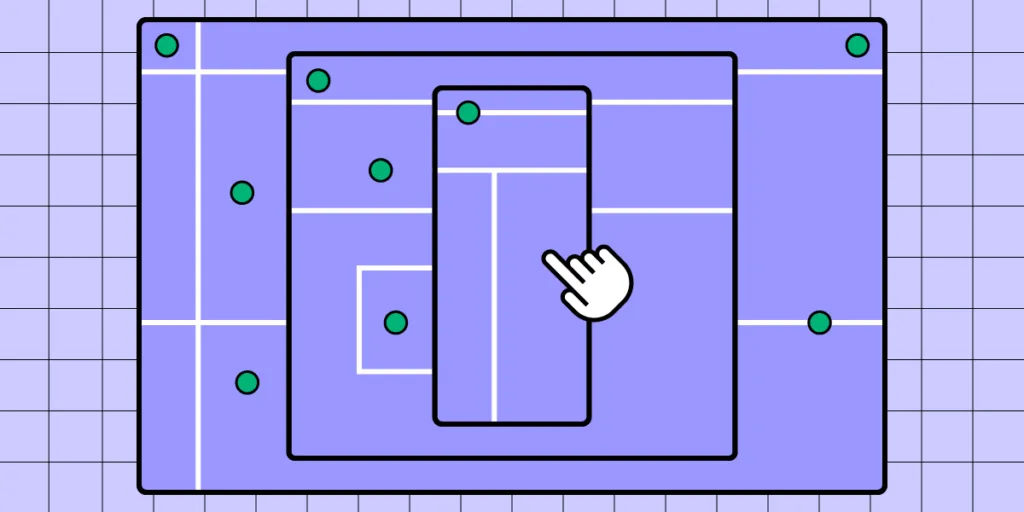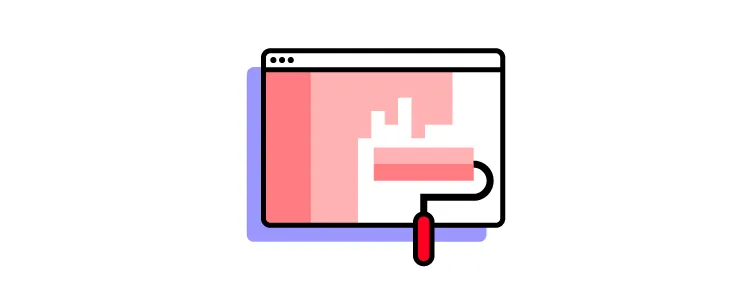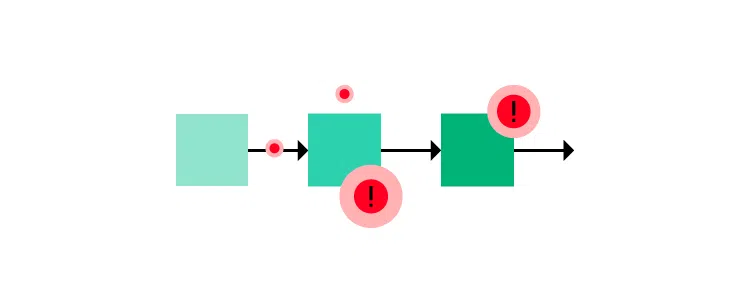What Is A User Interface? Definition & Best Practices For UI Design

In 2022, there were an estimated 4.95 billion global internet users. That’s more than 60 percent of the world’s population.
For so many people to use smartphones, tablets, laptops, and desktops — not to mention the websites and apps — they need to be easy, efficient, and enjoyable to use. If they’re not, it’s a massive turn-off.
At the heart of this is the user interface (UI). In this article, we’ll explain what is a user interface, why it’s so important, and offer some golden rules for incorporating it into the design of your website or app.
Table of contents
What is a user interface?
A user interface (UI) is how we interact with smartphones, laptops, and other devices. It might include a display screen, keyboard, or mouse.
Each application or website we encounter also has its own UI, the design of which requires careful consideration so that it’s intuitive and satisfying to use. Getting it right is important, especially for businesses — according to a study by Forester, good UI can raise a website’s conversion rate by up to 200%.

The user interface is often talked about alongside user experience (UX). This includes the visual design and experience of a web page, desktop or mobile app screen, how it behaves (for example its load time and responsiveness), and how well users understand the role it plays in their lives.
Both UI and UX are in the field of human-computer interaction (HCI). Read UX vs. UI Design – The Differences You Need to Know to learn more about interaction design.
What is a graphical user interface (GUI)? How is it different from a UI?
There are different types of user interfaces.
In the early days of computers, information was often presented in command-line interfaces, consisting of text lines on a screen. This was a relatively basic example of a user interface.
As technology and design advanced, images, icons, and dialogue boxes were added to make interactions more accessible. This is a graphical user interface (GUI). As the name suggests, it’s a UI with the addition of graphics. A graphical user interface is best thought of as a subset of UIs.
Another UI subset is voice user interfaces (VUIs). Examples of these include Amazon’s Alexa and Apple’s Siri.
The elements of a user interface
User interfaces are made up of elements. They’re the building blocks of apps and websites and are designed to be consistent, so users know what to expect when they’re interacting with the digital product.

There are hundreds of examples, but common design patterns include:
- Input Controls — for example, checkboxes, dropdown lists, and buttons
- Navigational Components — these include breadcrumbs, sliders, and search fields
- Informational Components – for example, progress bars, notifications, or message boxes
- Containers — accordions and other elements that help to group content
To learn more about UI elements, read User Interface Elements Every Designer Should Know.
Why is a good user interface key to product success?
Research suggests it takes users just 0.017 seconds to form an opinion about a website. The single most important factor in this snap judgment is how it looks and feels. What’s more, 94% of decisions to exit a site are design related.
Clearly, the UI is crucial in determining whether a web design or app is a success. And given that most enterprises see these platforms as their ‘shop window’, it may make or break their business, too. Here are more reasons why good UI is important…
Better user acquisition
Having a good design for an app or website is a great way to attract new customers and it can give you a competitive advantage. Here’s an example.
Let’s say you’re interested in buying a product. There are two companies that sell it — and for the same price. The only difference is that one company’s website is clear and simple to navigate; they showcase the product well with lots of visual elements and present information to help users reach their goals.

On the other hand, their competitor’s site takes ages to load, is hard to navigate, and when you finally find the product in question, information is buried near the bottom of the page and you can’t find the ‘Checkout’ button. The experience design is horrible. So is the user interface design.
With that in mind, which company do you buy from? It’s a no-brainer, right?
Higher customer retention
Attractive user interface design doesn’t just help to attract new customers. If your site or app is simple to use, you can bet they’ll keep coming back regularly. Good UI encourages browsing, so end-users spend more time on your site. It increases the chances of conversion, so you make more sales. And it reduces the probability of users cutting their site visit short and jumping ship to your competitors’ platforms.
Improved brand loyalty
Of course, if a good UI prompts end-users to keep coming back to your site, it’s inevitable that they’ll develop an affinity with your brand. And loyal customers are incredibly valuable, as they sing your praises to people they know.
Scalability
The most effective user interfaces are those that incorporate the principles of design simplicity. That means designing only what’s essential and making sure your website or app is coherent, consistent, and user-friendly. It’s about keeping things clear and avoiding confusion by disrupting their mental models.

When you achieve design simplicity, it’s easier to add new features and develop the infrastructure of your website or app. In other words, it’s scalable.
To learn more, read What is Design Simplicity and How to Achieve it?
Fewer errors
User testing is an important part of the UI design process.
There are a number of stages of user testing. As the process goes on, UX designers learn more about user requirements and iron out any problems with user journeys. As they grow in confidence, the designs become workable prototypes that more closely resemble the final product.

When the time comes to hand over the designs to developers, the UX designers have ironed out any problems users had when navigating the website or app prototypes. This saves time and resources; a developer can bring the designs to life knowing that the end product works for the user.
UX designers are well-placed to offer insights that can help resolve issues during the development process. If a page loads slowly, for example, they can quickly assess the impact it has on the user and help the developer determine whether it’s critical to the success of the final product.
Accessibility
Good UI requires a website or app to be accessible for all. It’s estimated that as many as one in five people has a disability that makes accessing information online difficult — a significant percentage of your audience. So it’s in your interest to comply with accessibility guidelines.
For more on that, read Web Accessibility Checklist – 28 Points You Must Comply With.
How to approach creating a good UI
Good UI starts with a prototype.
If a prototype reflects the look, feel, and functionality of a working website or app, it’s easier to get in-depth feedback on the user experience. If a prototype is more basic — for example, static images linked together — it’s hard to know if your designs will work in real life. This could compromise the usability of your final product.
UXPin is a design tool that helps to create fully-functional prototypes. It’s component-driven, which means that instead of starting from scratch, design teams drag and drop interactive components to build prototypes. This helps to speed up the design and build process.
Anyone who interacts with prototypes made with UXPin could easily think they’re using the real interface; they can input data, click links, scroll pages, or perform any other task that the designer permits.
As users interact with prototypes, UXPin captures data that lets designers know what’s working and what needs improvement.
When it’s time to hand over the final designs to developers, UXPin prototypes give developers a clear idea of how the end product is supposed to work. This makes for smoother collaboration between design and dev teams.
Ready to design user interface?
If you were wondering, ‘what is a user interface?’ then hopefully this article has given you a better idea. The UI isn’t just about aesthetics — it determines how people interact with your website or app and, ultimately, how they perceive your brand.
Designed well, your UI can help you attract new, loyal customers and gain an advantage over your competitors.
If your UI incorporates the principles of design simplicity, your product should be easier to scale as your business grows. And it’s important not to overlook the importance of making your UI accessible to all.
At the heart of good UI is user testing. And strong UX design tools such as UXPin can certainly help with that. UXPin contains every feature you need to design fully functional UI prototypes that can be tested with users, before being translated into code and shared with developers. You’ll certainly benefit from its functionality if you’re involved in UI design.




